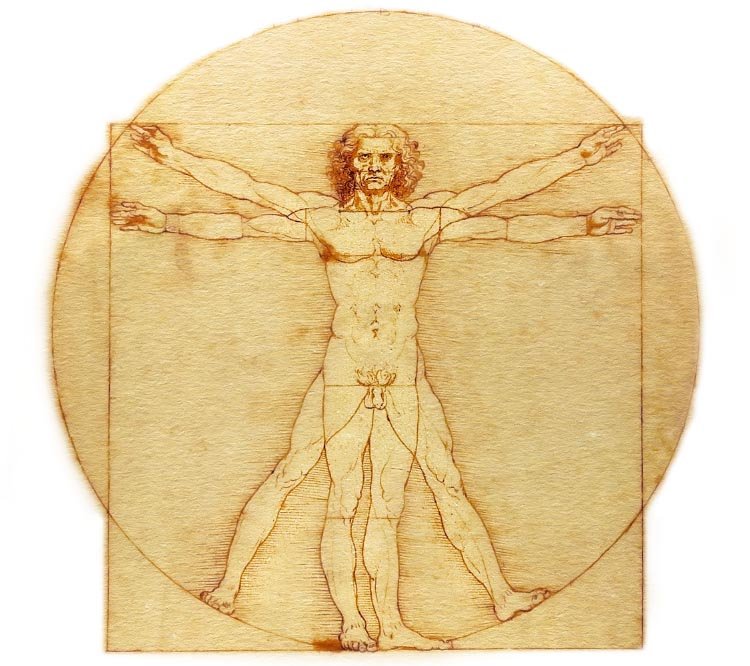
PART 5:
At the bottom of the letter that Leonardo wrote seeking employment with Duke Ludovico Sforza, the ruler of Milan, he mentions a horse.
Again, the bronze horse may be taken in hand, which is to be to the immortal glory and eternal honor of the prince your father of happy memory, and of the illustrious house of Sforza.
The statue of Francesco Sforza (Ludovico’s father) began as soon as Leonardo moved shop from Florence to Milan in 1482. But in typical Leonardo fashion, the full size clay model was not completed until 1492 and Leonardo still had to figure out how to cast this beast. It was enormous! The largest equestrian statue that was ever designed at the time, and 70 tons of bronze was set aside for the pouring. The size meant that it was too large for the processes of the age.
Before the puzzle could be solved, the bronze was diverted in 1494 to be used to cast cannons. The country was at war with France, and needed as much artillery as it could obtain. The statue was never completed and the model was destroyed by target practice when the French captured the city in 1499. This failure was not forgotten, as it was said to be a catalyst in the Michelangelo-Leonardo rivalry.
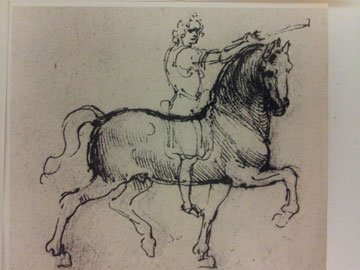
Giorgio Vasari wrote that one day around 1504 two men were debating Dante on the Piazza Santa Trinita steps in Florence and asked Leonardo to explain Dante’s meaning. At that moment Michelangelo was coming down the stairs and Leonardo said to ask him instead. Apparently, this pissed Michelangelo off so much that he said to Leonardo "You explain it yourself, you who made the design of a horse to be cast in bronze, but who was unable to cast it!" It was said that Leonardo was made red in the face by his words. There are accounts that every time the path of these two crossed, they would make thinly veiled insults to one another.
The 1480s was the decade when Leonardo starts to blend art and science. As I have shown in part 4 of this series, he designed and drew marvelous new and improved weapons of war. But more than just war, he was able to begin to study other sciences that would help him in his art, like his study of the effects of water and his interests in anatomy. To draw the human body, you must know the human body and so Leonardo set out to do just that.
We know the exact date in which Leonardo began to draw his anatomy sketches, April 2nd 1489. He titles the new notebook Book entitled On the Human Figure, that is amazing in itself because dates and titles among his papers are extremely rare. The title also suggests that this was his working copy, and he intended to publish his work when completed.
Unfortunately, during that decade the only source of human anatomy he seemed to be able to procure was a skull and a left leg. So he made due with animal sources - dogs, cows, ox, even a bears foot. Due to the lack of subjects and Leonardo’s endlessly working mind, he stopped pursuing his work of anatomy in 1490, but not before drawing his most famous sketch Vitruvian Man (Top picture) - a study of human proportions. He did not pick anatomy back up until around 1504 when he was back in Florence and had built up enough reputation to obtain access to the bodies of executed criminals.
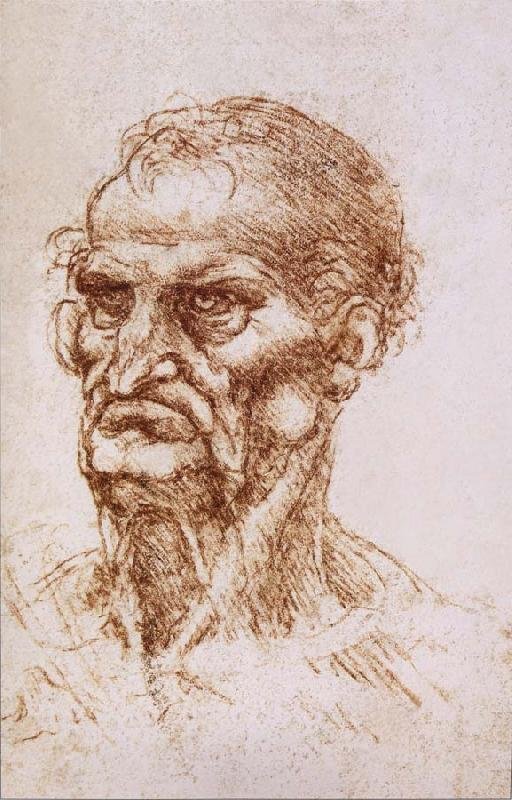
What brought him back to the world of anatomy was a very old man he met at the hospital. The man didn’t know how old he was but he had a 58 year old grandson. Suspecting that the man was over 100 years old Leonardo wrote 'While sitting on a bed… without any movement or other sign of any mishap, he passed from this life. And I dissected him to see the cause of so sweet a death.' Soon after he also dissected the body of a two year old boy and was able to make comparisons. In the case of the child the arteries leading to the heart were supple and clear. On the old man they were brittle and clogged. Leonard was describing atherosclerosis, which was not discovered until the 1890’s.
Here are some discoveries he noted on his papers, discovering all this on his own without assistance or formal education. It really is quite amazing.
•Deduction of the hierarchical structure of the nervous system, with the brain as a command center.
•Deduction that it was the retina of the eye that was sensitive to light, not the lens as previously believed. He tried in vain to understand why visual objects are not seen upside down given the the lens-retina arrangement of the eye. Leonardo could never have imagined the complex neural processing in the brain that is now thought to control this process.
•Discovering the lesions of atherosclerosis and their possible role in obstruction of the coronary arteries. Even more remarkably, he presciently attributed these lesions to an “overabundance of nourishment” from the blood.
•The identification of the heart as muscle and speculations on the origin of body heat(at the time they thought that the heart was what heated the body) and the heart’s activity. He also discovered that the arterial pulse corresponds to ventricular contraction and that the ventricle shortens during contraction.
•The development of an understanding of mechanics by replacing muscles with wires. By doing this he was able to observe reciprocal movements between complementary muscles.
•Working out that the penis becomes erect by filling with arterial blood, rather than air as previously supposed.
•Being the first to state that the mother’s contribution to the inherited characteristics of the fetus are equal to that of the father.
(Source)
Leonardo wrote that he dissected more than 10 corpses (at the time of writing, scholars say the total number during his life was around 30), working quickly to discover the secrets of the body. That he was alone studying the bodies at night with them quartered and flayed, presenting a terrible sight. He would not sleep, as he had to get as much done as possible before the body succumbed to decomposition. As there were no refrigerators or preserving techniques available to extend his time, he could only start again with a new cadaver.
In the first picture, on the left is a typical sketch of the day, and one of Leonardo's for comparison.
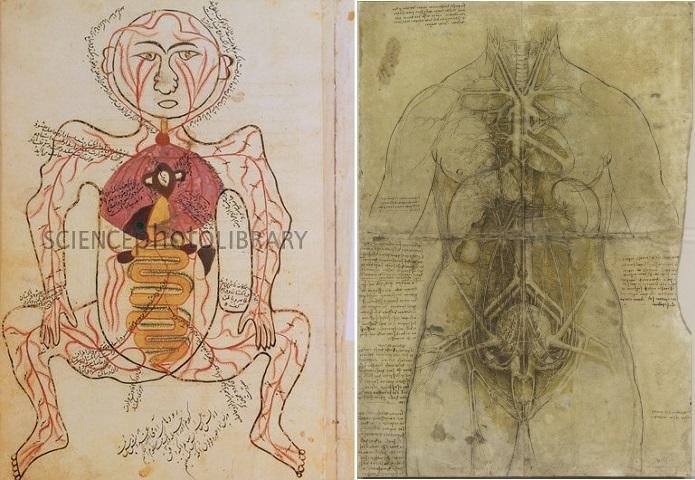
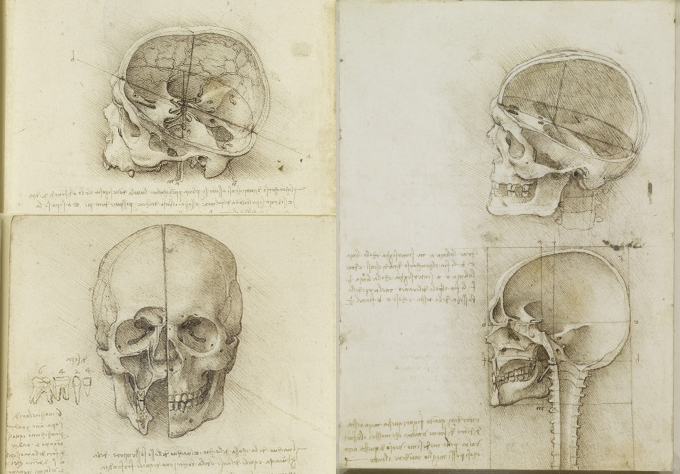
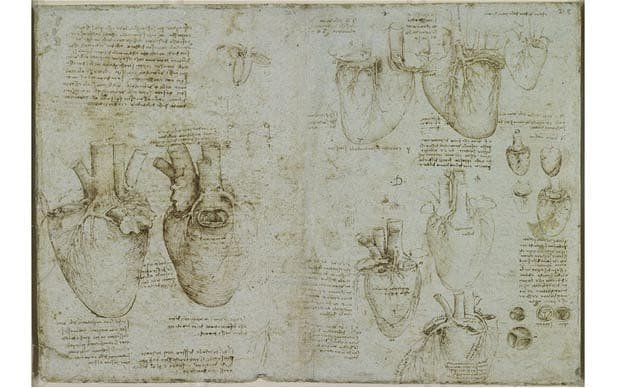
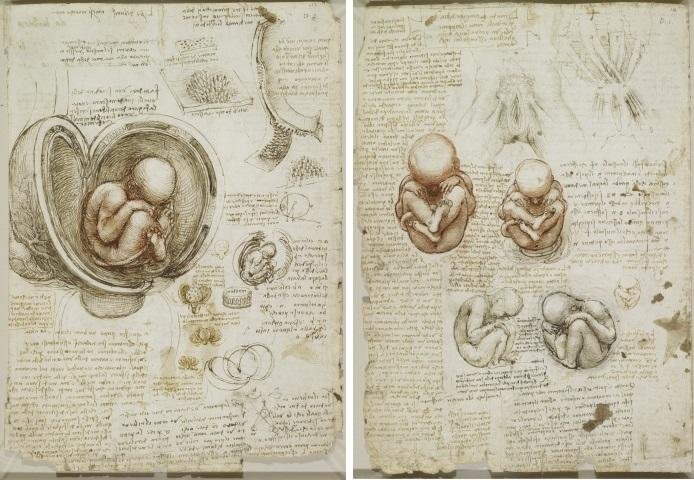
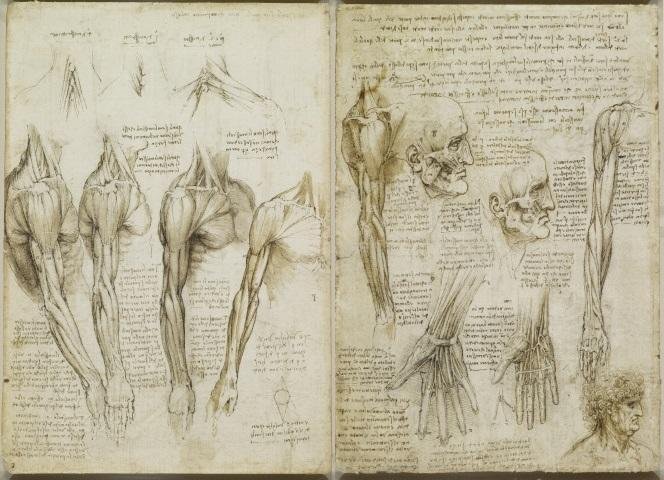
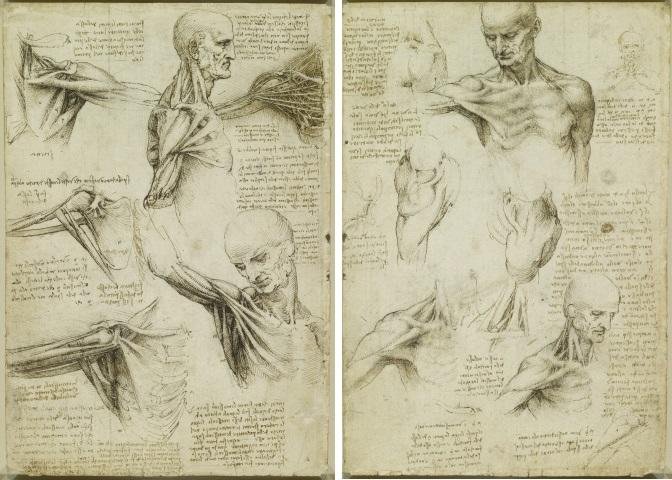
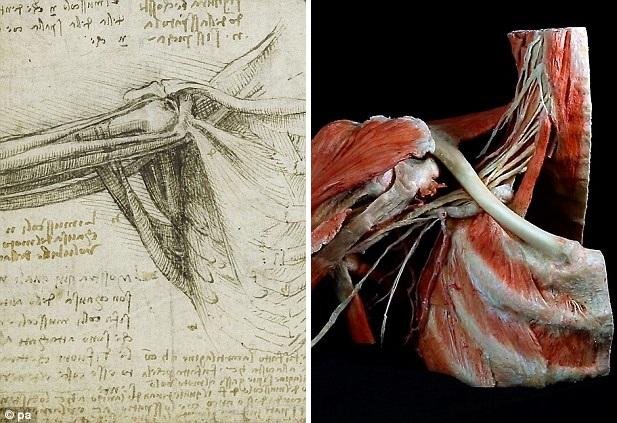
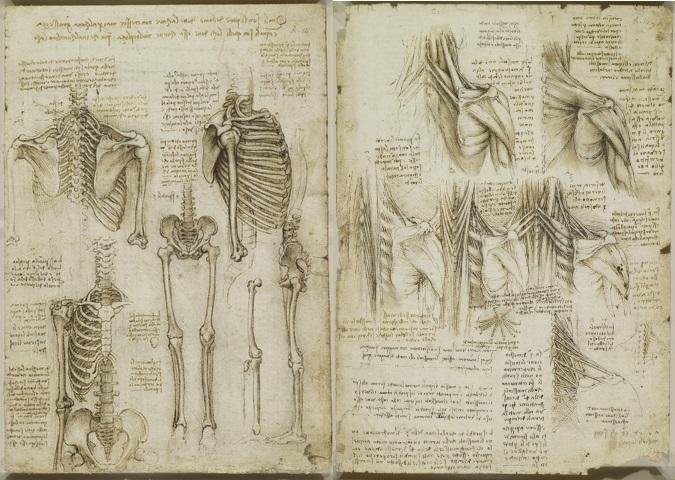
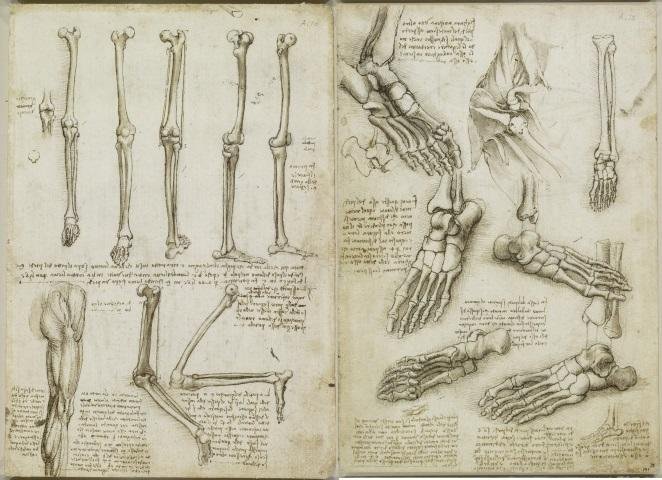
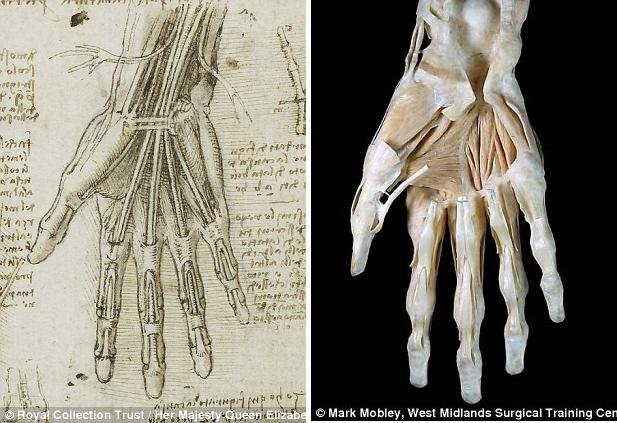
Anatomy Photo Source /Source/ Source /Source
